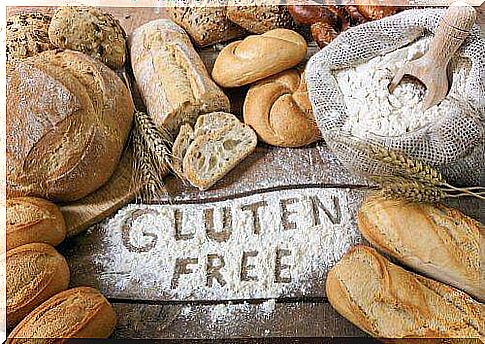Health Effects Of A Gluten-free Diet

A gluten-free diet promises some health benefits, but they are not always true. This has led to controversy over whether a gluten-free diet really has health benefits or is just a new craze. What are the health effects of a gluten-free diet?
Gluten-free diet for non-celiac patients

Today, gluten-free diets have become popular because it is believed that avoiding gluten would help you lose weight. This is not the case, and while gluten is not an essential protein, its removal from the diet is not recommended other than celiac disease alone.
First, it is important to mention that some people may have some degree of hypersensitivity or intolerance to gluten. This remains to be diagnosed by a doctor. If you are diagnosed with gluten intolerance, it is important to exclude gluten from your diet .
A gluten-free diet also benefits people with an inflammatory bowel disease or autoimmune disease. A gluten-free diet is also good for people with hormonal or even neurological disorders.
It is important to note that only those suffering from gluten intolerance or any of the other health conditions mentioned should follow a gluten-free diet. Excluding gluten unnecessarily is not recommended and is only an indication of a widespread, myth-based belief.
Ultimately, the most important thing is to follow a balanced diet that includes both plant and animal foods as well as whole grains and dairy products.
Unless there is a specific health need to exclude gluten, as in celiac disease, don’t blindly believe in the benefits of a gluten-free diet.
Celiac disease

Celiac disease is a persistent gluten intolerance of unknown cause. This disease causes chronic inflammation of the small intestinal mucosa and a gradual atrophy of its hairy appendages. People diagnosed with celiac disease must adopt a gluten-free diet.
Symptoms from which gluten intolerance can be identified are often digestive problems such as flatulence, swelling, abdominal pain, diarrhea and constipation. Skin symptoms, fatigue or sleep disturbances may also occur.
One of the main features of people with celiac disease is that it is really difficult for them to gain more weight. This is because small intestinal fluff supplements are unable to absorb nutrients from wheat products. This naturally means that they do not get calories from these foods.
Excluding gluten from the diet unnecessarily can cause weight management problems, meaning that when a person eats gluten-containing products again, it can cause weight gain easily.
Gluten hypersensitivity without celiac disease
1-6% of the population suffers from this ailment . Doctors recommend excluding gluten from your diet to treat it.
Irritable Bowel Syndrome (IBS) is often associated with gluten hypersensitivity without celiac disease. In total, about 15% of the population suffers from it. This ailment is associated with abdominal pain, diarrhea and flatulence. A gluten-free diet can help reduce symptoms.
On the other hand, some people are allergic to some wheat proteins. This may vary between children and adults. Children usually have a more classic allergy, which often disappears during childhood.
In general, such allergies have very diverse symptoms, ranging from itching to intestinal problems. Because these ailments are difficult to diagnose, the only treatment option is to eliminate wheat and wheat products from the diet, i.e., adopt a (in this case necessary) gluten-free diet.
In any case, it is important to know that the health effects of a gluten-free diet only apply to people with celiac disease, hypersensitivity to gluten, or allergies. Otherwise, gluten should not be left out of the diet.









